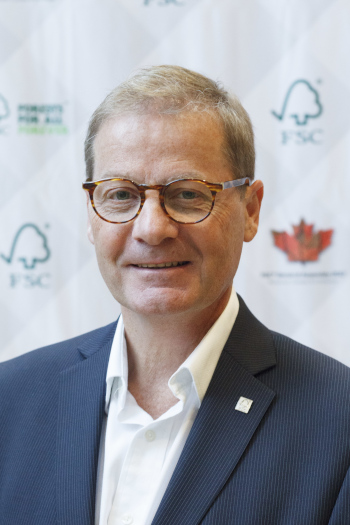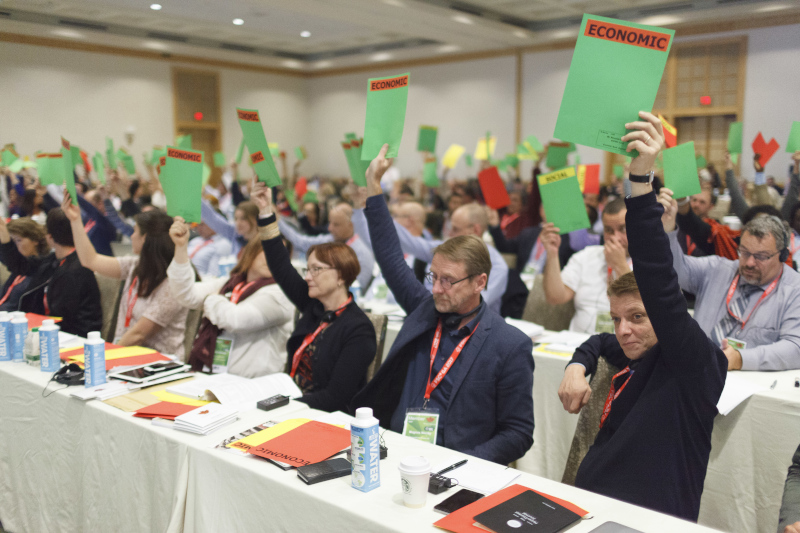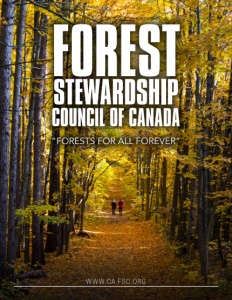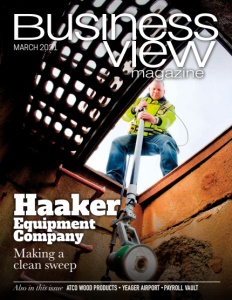Forest Stewardship Council of Canada
“Forests for all forever”
Business View Magazine interviews Francois Dufresne, President of the Forest Stewardship Council of Canada, for our focus on Sustainable Construction
The Forest Stewardship Council (FSC) works diligently to help protect animal habitat, Indigenous peoples’ rights, workers’ rights, and areas of significant environmental or cultural importance as it relates to forests. The global not-for-profit organization accomplishes this by setting standards for responsible forest management which are then used to evaluate forests to strict environmental and social standards. Products sold with the FSC label helps businesses and consumers make informed choices about the forest products they buy, and create positive change to keep our forests for all forever.
In Canada, the Council is working to spread awareness of FSC as the symbol of responsible forestry by
Increasing certification of Canadian forests and companies; supporting certificate holders on understanding requirements, increasing market share and development; developing and revising standards for forest management in Canada; and verifying the use of FSC trademarks.
FSC is the only forest certification system that protects rare and endangered forests and wildlife. All forests that are undergoing FSC certification must be assessed to determine if they contain any areas of high conservation value, and if these do exist they must take action to protect and enhance these values.

Francois Dufresne, President of the Forest Stewardship Council of Canada
Business View Magazine spoke with Francois Dufresne, President of the Forest Stewardship Council of Canada, about the goals of the organization, his passion for the cause, and insights into the future landscape of sustainable forest management. The following is an edited version of our conversation.
BVM: How did the FSC come into being?
Dufresne: “The FSC was created right after the failure of the Real Earth Summit in 1993, where governments around the world could not agree to save the forests from deforestation, which was already a problem back then. Elements from all sides – environmentalists, industry, unions, Indigenous peoples – came together on a voluntary basis to create this organization, which was very novel at that time, to certify forest products from responsible sourcing as a market base and a solution to address that issue.
“That’s how FSC was born, and it was actually founded here in Canada; Toronto had the first international assembly of the organization. It then moved to Oaxaca in Mexico and now it’s based out of Bonn, Germany. After more than 25 years, we are now in 80 countries with 225 million hectares (600 million acres) of FSC-certified forests around the world. I’ve been with the FSC since 2012 as the head of the national office in Canada.”
BVM: What are the biggest challenges for the Council and the industry today?
Dufresne: “The biggest problem we have, interestingly enough, is still the issue with deforestation. We lose millions of hectares of forest every year, especially in the Amazon in South America, in the Congo Basin in Africa, Southeast Asia (Borneo and Indonesia), but also the north. There are issues with responsible forest management in North America, Eastern Europe, and Russia, in terms of maintaining sound forest practices to avoid the loss of biodiversity. And especially here in Canada with respect to the rights of the Indigenous peoples. Those are the major issues we’re facing more than ever nowadays.
BVM: What differentiates FSC as a membership organization?
Dufresne: “We have members around the world from different horizons of society. The beauty of FSC, and what makes our governance unique in the forest certification world, is the fact that the big environmentalist organizations such as Greenpeace and many others are part of one membership group called the Environmental Chamber; we also have the Social Chamber with local municipalities and unions around the world; and finally we have the Economic Chamber representing industry, with the major producing companies and also consumer companies, like Proctor & Gamble and Kimberly-Clark in North America.
“There are three Chambers throughout the world and now, in Canada, we have a fourth Chamber with Indigenous peoples. But they all have the same voting power. So we have a true consensus and compromise, in terms of applying our standards on the ground that reflect the wish and the will of society. It’s not biased, or one party versus the other, and that makes the government structure of FSC unique and very strong.”
BVM: Does FSC have the ability to create industry standards?
Dufresne: “Yes, we do. FSC will issue forest management standards to be applied on the ground, and they are updated or revised on a regular basis – it takes five to ten years. We just issued the last one in 2019 in Canada. It’s quite an achievement because we’re addressing major crises in the Canadian forests with regard to biodiversity and the decline of Woodland Caribou, but also Indigenous rights outlined in the United Nations Declaration on Rights of Indigenous Peoples. So we issue those standards to be implemented on the ground but we do not audit them directly. That is the responsibility of a third party audit structure that gets their accreditation internationally, independent of FSC. It assures the impartiality of the application of our standards.

FSC General Assembly, 2017
Copyright Geoff Howe
“Our standards are requiring aspects of government regulations but we’re not based on that. Most of the time we go further on a voluntary basis to “blaze the trail” – to be at the leading edge of responsible forest management on the ground that needs to be applied urgently to address deforestation and biodiversity and also protect the remaining intact forests around the globe.
“We create consumer awareness through partnering with consumer companies for our certified products and we try to raise that awareness with the added attributes of FSC in the marketplace. The public in general is very much aware of the importance of forests around the world. Forests absorb CO2 and emit oxygen in the air we breathe and therefore sequester carbon which is crucial to address climate change. More and more consumers will buy products that come from responsible sourcing, either from forests, or clothing, or the food industry, solid wood construction and other material. I think it is a preoccupation from an increasing portion of the population, especially in North America and Europe.”
BVM: Do you have different levels of certification?
Dufresne: “There are two types of certification. The Forest Management Certification, where producer companies that are directly interacting with the forests, either from public or private land, have to go through a pre-audit process that normally takes a year to comply with the minimum requirement of our standard. Then there is a long audit process to comply with our principles and criteria and meet all the indicators without any non-compliance. When they are met, a certificate is issued for a five-year period, and there is a yearly audit process to make sure it stays consistent. It’s a very rigorous system and all the reports are accessible by the public at large and local stakeholders.
“But also, throughout the chain of transformation of forests coming from producer companies right to the retail market, there is a system called Chain of Custody Certificate. At every step of the supply chain, there is a certificate that must be held by the different companies to make sure we can trace the final retail product back to the forest or forests it came from. So traceability of any FSC products can be identified right to the source.”
BVM: How will FSC continue to be a voice for responsibly managed forests in the future?
Dufresne: “FSC is becoming a platform to co-create a forest solution worldwide. It is a forest certification scheme but it’s more than that. It’s going to become a solution for ecosystem services to generate value out of intact forests by leaving them untouched. Either for carbon sequestration, or watershed protection that is badly needed for large populations in urban areas around the world, or to control the climate cycle and maintain biodiversity, and regenerate the ecosystem.
“We’re pushing new solutions that are actually ready to be implemented and a big part of our future is to take care of old growth and intact forests. There are five of them remaining globally – one is the Boreal forest here in Canada. In terms of our certified forest product system, intensification is evolving in such a way to take a large landscape approach in terms of forest restoration and maintaining biodiversity. We have in our new standard to protect the Woodland Caribou and also to protect the rights of Indigenous peoples and create partnerships based on mutual trust. We believe these pillars are a source of effective and feasible solutions on the ground that governments in Canada can use to create legislation. That’s the value proposition FSC is bringing forward to forest situations here and around the world.”
AT A GLANCE
Forest Stewardship Council of Canada (FSC)
What: A global not-for-profit organization that sets the standards for responsibly managed forests
Where: Based in Montreal, QC and Toronto, ON
Website: www.ca.fsc.org


